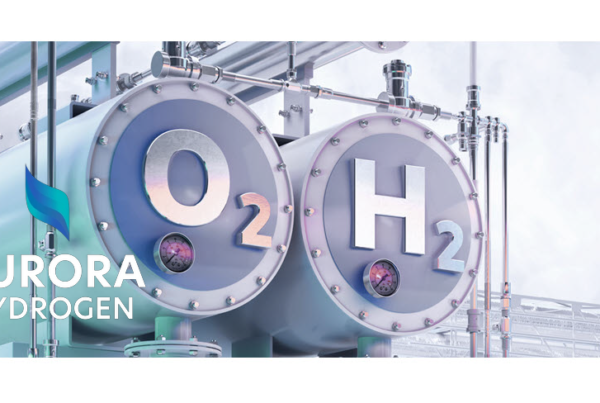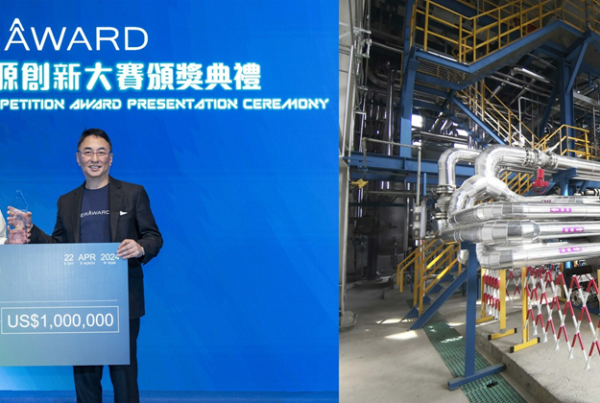
The Yangtze River Hydrogen Corridor plan will develop and set up hydrogen stations along highways and build four express highways over three years in the Yangtze River Delta region
Synopsis of Plan:
The first four hydrogen highways built will be:
- One connecting Shenyang, capital of Liaoning province in northeastern China, to Haikou, capital of the country’s southernmost province, the island of Hainan
- The second will be the Shanghai-Chengdu Highway
- The third will be the Shanghai-Chongqing Highway
- The fourth will be the Shanghai-Kunming Highway at the capital of southwestern Yunnan province.
By 2025 build an additional 10 hydrogen highways in the delta region
By 2030 build an additional 10 bringing the total number to over 20 hydrogen highways
Shanghai–This is according to the Yangtze River Delta hydrogen corridor development plan drafted by the Beijing-based academic group Society of Automotive Engineers of China and released at the 2019 Pujiang Innovation Forum in Shanghai today.
The first four hydrogen highways will be 1) the one connecting Shenyang, capital of Liaoning province in northeastern China, to Haikou, capital of the country’s southernmost province, the island of Hainan; 2) Shanghai-Chengdu; 3) Shanghai-Chongqing; and 4) Shanghai-Kunming, the capital of southwestern Yunnan province.
Facing the opportunities and challenges of the world’s hydrogen energy and fuel cell vehicle industry development, under the guidance of the Yangtze River Delta Regional Cooperation Office and the support of Shanghai Science and Technology Commission, Nantong Municipal People’s Government, Rugao People’s Government and other units, China Automotive Engineering The “Dragon River Hydrogen Corridor Construction and Development Plan” prepared by the Society was officially released at the Pujiang Innovation Forum.
The plan is based on high-quality development, moderately advanced layout, combined with its own industrial base and development conditions, has developed a plan suitable for its own development and strong feasibility, and has built the Yangtze River Delta Hydrological Corridor into an internationally advanced level of hydrogenation infrastructure network. The coordinated development of hydrogen infrastructure and fuel cell vehicles.
As the leading region of China’s hydrogen energy industry demonstration, the Yangtze River Delta has a good development foundation and advantages such as huge industrial environment potential, comprehensive demonstration and promotion, rich hydrogen basic resources and hydrogenation infrastructure support. However, the cities in the Yangtze River Delta have not effectively achieved the situation of station coordination, interoperability, and mutual benefit. The construction of a hydrogen corridor connecting the Yangtze River Delta cities can effectively break the current dilemma. The main part of the hydrogenation infrastructure network is to open up the fuel cell vehicle intercommunication path, which is conducive to the formation of regional synergy and demonstration effects and the promotion of energy transformation and ecological civilization construction.
The development of the hydrogen corridor focuses on the inter-city ribbon and network hydrogenation infrastructure construction in the Yangtze River Delta urban agglomeration, taking into account the construction of hydrogenation infrastructure in key cities, to meet the demand for inter-city transportation hydrogenation, and moderately ahead. Construction to promote the coordinated development of hydrogenation infrastructure and hydrogen fuel cell vehicles. The development of the hydrogen corridor will be divided into three phases:
The first phase is the recent development plan (2019-2021), which is based on the existing hydrogen energy industry foundation in the Yangtze River Delta to demonstrate the promotion of hydrogen fuel cell vehicles. At the same time, the industry-leading city with Shanghai as the leader will become the core point of the hydrogen corridor, and the first four hydrogen high-speed demonstration lines will be started. The first cities include Shanghai, Suzhou, Nantong, Rugao, Ningbo, Jiaxing, Huzhou and Zhangjiagang, which have been determined to actively develop hydrogen energy and fuel cell vehicle industries.
In the early stage of the development of the hydrogen corridor, the first city combined with the actual development of the specific planning, based on the fuel cell vehicle promotion volume, demonstration and promotion line hydrogenation demand as the starting point, combined with the hydrogen supply situation, priority in the construction of public transport, logistics, rental and other fuel cells The car promotion phase targets the adaptation of the hydrogenation facility.
At the same time, the intercity expressway connection station will be developed. With Shanghai as the key city, it has a good foundation or a strong policy-oriented city for the promotion of fuel cell vehicles in Suzhou, Nantong, Rugao, Ningbo, Jiaxing, Huzhou and Zhangjiagang. The Intercity Expressway G15 (Shenhai Expressway) is used as the Hydrogen Expressway to build 4 hydrogen refueling stations, connecting Ningbo-Shanghai-Suzhou (Zhangjiagang, Changshu)-Nantong-Rugao and other cities; taking the intercity expressway G42 (Shanghai) As a hydrogen energy highway, Rongcheng Expressway has built 2 hydrogen refueling stations, connecting Shanghai-Suzhou and other urban areas; and using the intercity expressway G50 (Hubei Expressway) as the hydrogen energy highway to build 2 hydrogen refueling stations, connecting Shanghai- Inter-city cities such as Huzhou; the Inter-city Expressway G60 (Shanghai-Kunming Expressway) is used as the hydrogen energy highway to build 2 hydrogen refueling stations, connecting Shanghai-Jiashan-Jiaxing and other cities. With the dotted line, a long-triangular banded hydrogen energy corridor is formed, and a demonstration of the hydrogen energy high-speed corridor is initially formed.
The second phase is the medium-term development plan (2022-2025). At this stage, the application development of fuel cell vehicles will be vigorously promoted, and the key technical level of hydrogen energy will be further improved. More than 10 hydrogen highways will be promoted among key cities to expand fuel cells. The scope of vehicle operations. At the same time, the hydrogen energy industry will grow rapidly, form an influential hydrogen energy industry cluster, and create a distinctive hydrogen corridor innovation development model.
In the middle of the development of the hydrogen corridor, expand the hotspot city planning, combined with the key city hydrogen fuel cell vehicle promotion plan, widely distributed in the city, intercity expressway and surrounding areas. It connects hot cities such as Nanjing, Changzhou, Wuxi, Changzhou, Zhenjiang, Yangzhou, Taizhou, Yangzhou, Yancheng, Lianyungang, Hangzhou, Zhoushan, Shaoxing, Taizhou, Wenzhou, Hefei, Wuhu, Maanshan and Xuancheng. Extending the four hydropower highways that have been built in the early stage, adding the intercity expressway G40 (Shanghai-Shaanxi Expressway), the intercity expressway S32/S21 (Shenjiahu Expressway), the intercity expressway S28 (Qiyang Expressway), and the intercity The expressway G1501 (Shanghai, Ningbo Ring Expressway), the Intercity Expressway G2501 (Nanjing, Hangzhou Ring Expressway) and other hydrogen energy highways continue to promote the formation of the network, and increase the formation of more than 10 hydrogen energy high-speed networks.
The third phase is the long-term development plan (2026-2030). The hydrogen corridor should cover all the cities in the Yangtze River Delta and more than 20 major expressways, forming an internationally influential fuel cell vehicle application area, fully driving the national fuel cell vehicle industry. The development of the future promotes clean energy and power transformation in society.
In order to promote the realization of this goal, the plan has formulated five main tasks, namely, demand traction to promote the construction of hydrogenation infrastructure network, regional linkage to accelerate the promotion and application of fuel cell vehicles, and strengthen the overall construction of the hydrogenation infrastructure guarantee system. A sustainable business model and a synergistic and efficient system of policies, regulations and standards.
In order to ensure the smooth facilities of these goals, the plan also sorts out 8 safeguard measures: strengthen organizational leadership, flexibly supply land, clarify approval management, strengthen fiscal and tax support, broaden financing channels, strengthen safety supervision, optimize industrial environment, and strengthen popular science propaganda.
As the hydrogen energy and fuel cell vehicle technology, industry and demonstration highland, the Yangtze River Delta has the best foundation for the development of hydrogen energy and fuel cell vehicle industry. At present, the world is in the process of rebuilding the new-type industry. The three revolutions of the energy revolution, the interconnected revolution, and the intelligent revolution have led to a comprehensive reshaping of new industries, cross-border integration, technology upgrading, and demand improvement, and jointly promote the coordinated evolution of new industrial ecology. The development of the Yangtze River Delta hydrogen corridor has promoted the development of the three major revolutions, which can drive the development of the hydrogen energy industry. At the same time, the hydrogen corridor can effectively promote the construction of a certain scale of hydrogenation infrastructure, promote the large-scale demonstration operation of fuel cell vehicles, and strengthen the Yangtze River Delta region. The linkage effect has promoted the Yangtze River Delta region to become a leading domestic and world-class fuel cell vehicle commercial operation cluster and hydrogen economy practitioner.
Read the most up to date Fuel Cell and Hydrogen Industry news at FuelCellsWorks




